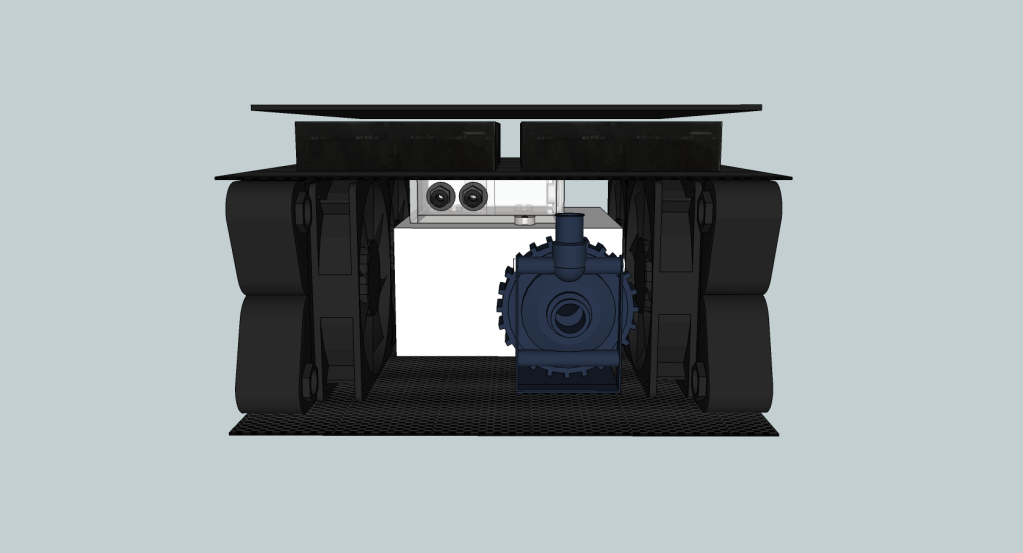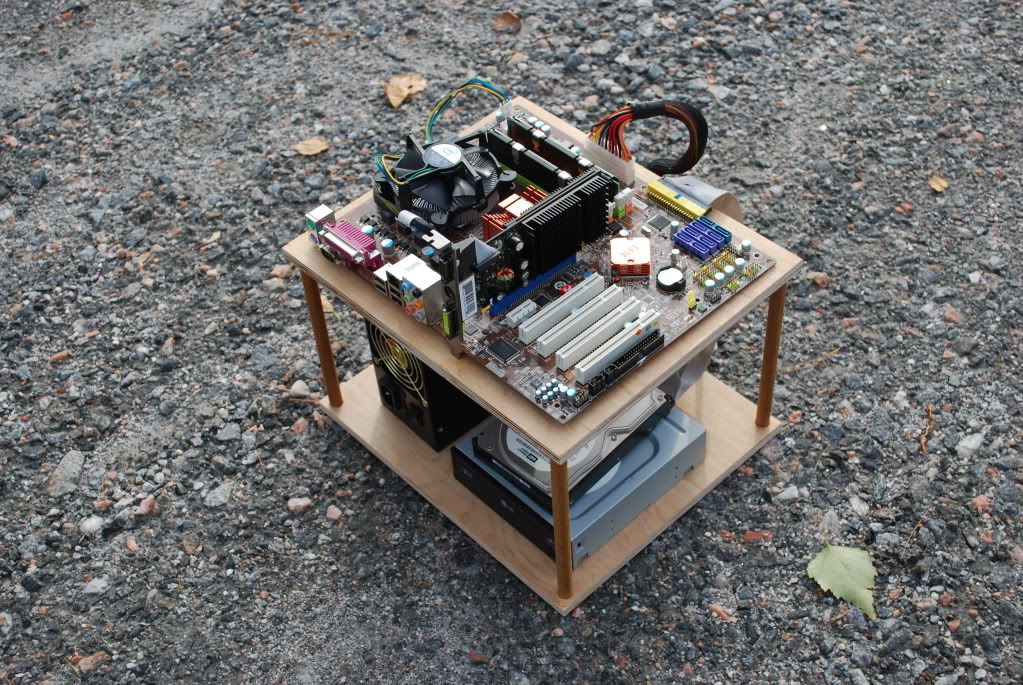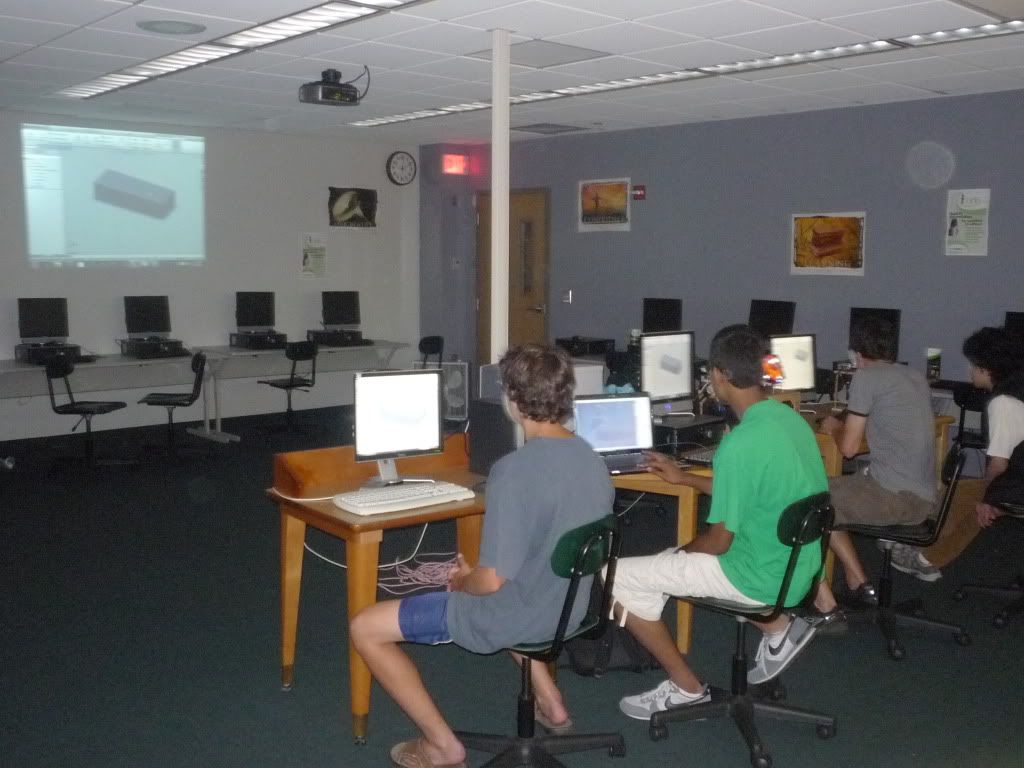So I've been wanting to try liquid nitrogen cooling for a long time. I've seen it around here and there and it's always seemed like the most extreme and fun thing to do with a home-made computer. The only problem is it's expensive and complicated, so I really needed a good excuse to try it out. Well, the opportunity came in Chem class Junior year. All non-AP science classes have to do a year long project and I figured this would be the perfect overkill project. I ended up spending well over 200 hours on it, but it ranks pretty high as one of my best High School experiences.

The design and planning stage took the longest at somewhere around 150-170 hours. I needed a wide range of equipment for the project, and since essentially none of it is sold in stores I ended up having to make most of it myself. First on the list was a liquid nitrogen pot for the graphics card. This would mount directly to the gpu core and serve as the interface between it and the liquid nitrogen bubbling away on the inside. The final design can be seen in action above. Due to inefficiencies in the design the final temperature was measured to be -147C (LN2 boils at -196C). One of the other revisions I designed can be seen below. It was too costly to machine and had to be simplified.
After many hours of thought, I came up with a design that would prove to be much cheaper and much more efficient. It would be milled from a solid block of copper and be fitted with an aluminum extension tube to allow for a higher volume of liquid nitrogen.
At this point I was still in contact with a machine shop to mill the pot for me, but a week before my experiment was scheduled to begin they decided they just didn't have time for a small job. Understandable, of course, but a little more notice would have been greatly appreciated. I had to get the pot made somehow, so I called up a friend and we decided to give it a go with his dad's drill press. After 13 straight hours and many, many problems we had a finished product.
One of the many complexities of liquid nitrogen cooling is how to insulate the sensitive electronics surrounding the pots from condensation and extreme temperature swings. I thought this would be a relatively easy problem to solve; I bought some Armaflex pipe insulation from Home Depot and used it for my first benching session. Well, the session lasted for 10 hours or so and I ended up having to throw all the data out because the Armaflex was preventing contact between the pots and the processor cores.
Needless to say, I went to sleep very frustrated that night, but the next day I found a solution that would fix everything. As I soon learned, artist's eraser, though soft and moldable, is a much more effective insulator than Armaflex. I used it to create a thin layer of insulation ontop of the PCB that wouldn't extend past the processor die.
Though I didn't use Armaflex on the PCBs, I used it extensively on the pots themselves to keep them from freezing up too badly.
Another issue is how to accurately guage the temperature of the processors once the liquid nitrogen is added. Below -40C or so the onboard temperature sensors are useless, so I used a type-k thermocouple with a probe embedded in the base of the pots. Unfortunately I only had one probe so I had to switch it back and forth between the CPU and GPU during the tests. It's not the easiest thing to keep two pots with just the right amount of ln2 in them without knowing exactly what the temperature is. CPUs are especially sensitive to temperature swings so I kept the probe there the most, but GPUs put out much more heat and so eat through liquid nitrogen much faster. There were several occasions where the GPU pot ran dry because I was so busy tweaking in the BIOS and watching the CPU temperature.

I made extensive use of the computer's BIOS (Basic Input-Output Service) to tweak the processors. This controls the interactions between every major part on the motherboard and so there are pages upon pages of settings. You would think that only the CPU settings would make a difference, but I found that completely unrelated settings sometimes raised performance significantly. It was my job to hunt those settings down and find the board's sweet spot in order to get the maximum possible overclock.
The picture above shows a 100% overclock. That is, I was able to run the processor at twice the manufacturer's rated speed. That's quite a big boost, but it doesn't stop there. By the end of the day I had the same CPU running at 5.3 GHz. That's a whopping 239% increase over manufacturer spec.

I spent another few dozen hours running benchmarks and recording all the data, and then a few dozen more writing up a 19-page report on my findings. At the end I provided a concept for the large-scale supercooling of servers using an autocascade refrigeration system (as shown below, unit and photo courtesy of Michael St. Pierre).
This device would be able to cool multiple processors down to -155C while using no more power than the AC units that already cool server rooms. I hope to build one of these units as an independent project this winter.






























